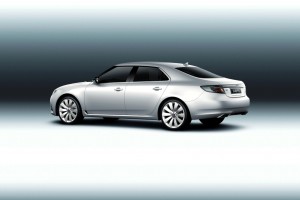If your teenager’s first car doesn’t make them yawn, it may not be a good choice.
Putting teenagers behind the wheel is scary enough when a parent is in the vehicle with them, but what to choose for their first vehicle not only heightens those fears, but it can also be a source of friction if their wants and a parent’s choice don’t align.
However, a new list from the Insurance Institute for Highway Safety suggests that boring and bigger are better when it comes to that first car. Fortunately, there are plenty of options in a variety of price ranges that meet those options.
“Time is on the consumer’s side,” said Anne McCartt, the Institute’s senior vice president for research. “It’s easier than ever to find a used vehicle with must-have safety features and decent crash test performance without spending a fortune.”
IIHS compiled its first list of recommended used vehicles after finding that the vast majority of parents who bought a vehicle for their teen driver bought it. The survey also found that the budgets for teens’ vehicles were limited. The mean purchase price for a teen’s vehicle was $9,800, while the median was just $5,300.
(UAW already taking heat for second tentative deal with FCA. For more, Click Here.)
“The prices for most of the vehicles we recommend for young, novice drivers are still higher than what a lot of people are used to spending,” McCartt said. “We would encourage parents to consider paying a little more for safety if they can.”
Many of the IIHS choices are well above that $5,300 median price, including several coming in at just under $20,000 such as the Mercedes GLK Class from 2011 or newer and several Infiniti models also 2011 or newer.
(VW says it will fix diesel emissions problem. Click Here for more on its plan.)
However, they did offer up some basic guidance when it comes to purchasing a vehicle, regardless of price:
- High horsepower should be avoided. The temptation to test the limits of a powerful engine is too hard for many teens to resist. Vehicles that only come with big engines have been left off the lists, but many recommended models have high-horsepower versions that should be avoided. The base engines of all the listed vehicles have adequate power for teens.
- Bigger, heavier vehicles are safer. Consumers won’t find minicars or small cars among the best choices or the good choices. (Small SUVs, which weigh about the same as midsize cars, are OK.)
- Electronic stability control is a must. This technology, mandatory since the 2012 model year, helps a driver maintain control on curves and slippery roads. It’s a proven lifesaver, cutting single-vehicle fatal crash risk nearly in half. All listed vehicles have the feature standard.
The organization offers up a complete list of choices, but some of the more reasonable options, price-wise, include: the Volvo S80 from 2007 or newer that starts at $5,800; Volkswagen Jetta 2009 or newer for $5,600; the Volvo XC90 from 2005 or newer beginning at $4,600.
(VW planning to cut diesel line-up in U.S. For more, Click Here.)
The cheapest vehicles on the lists? Saab wagons and sedans. The 2005-2011 9-5 and 9-3 models made the “good” list with prices kicking off at $2,700.


Did IIHS review repair costs for these vehicles? Nice cars, boring cars, expensive to maintain.
The ideal cars for new/teen drivers is somewhat subjective. Most people agree that a lower powered, daily driver is better than a high powered, sporty, expensive car for a number of reasons. Beyond that there are all sorts of somewhat conflicting perspectives. As an example some folks believe that larger cars are inherently safer than small cars and there is some statistical data to support that belief. Some people feel newer vehicles with lots of safety devices are a better choice than an older vehicle. People need to decide for themselves what they wish for their children to drive unless the teen is buying the car themselves.